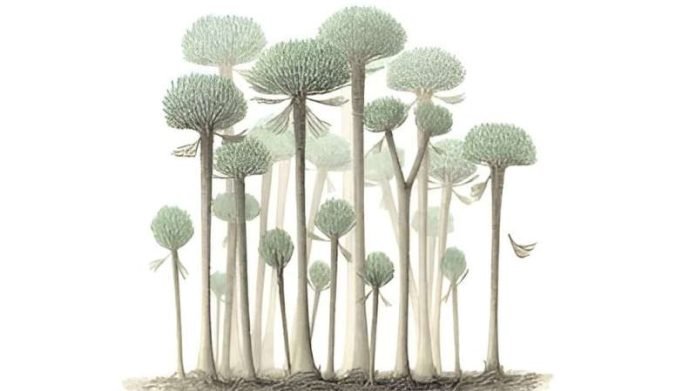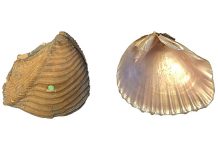
The discovery of the Earth’s oldest fossil forest on the coast of Devon and Somerset in the U.K. has offered a remarkable glimpse into our planet’s ancient past.
These fossils, dating back approximately 390 million years, provide evidence of an extensive forest that once covered the east coast of what was then part of the Old Red Sandstone continent, now Europe.
This finding challenges previous records by being 4 to 5 million years older than the oldest known fossil forest found in Cairo, New York, in the U.S.
Researchers from Cambridge University, with identification work done at Cardiff University, have unearthed fossilized remains of cladoxylopsids, a pioneering type of tree that thrived in terrestrial ecosystems for around 5 million years before the evolution of more modern woody trees.
These cladoxylopsids, including trunks up to 2 meters long and smaller branches, represent a critical phase in the development of early forests and, by extension, the Earth’s biosphere.
Dr. Christopher Berry from Cardiff University’s School of Earth and Environmental Sciences played a pivotal role in identifying these fossils.
He highlighted the significance of these Calamophyton trees, emphasizing their place as Britain’s oldest known fossil trees and a crucial piece of the puzzle in understanding vegetational history.
The discovery not only pushes back the timeline for the origin of forests but also offers insights into the ecology of the world’s earliest forests.
Unlike the trees we are familiar with today, Calamophyton trees had hollow trunks with a ring of woody strands around the outside and did not bear traditional leaves. Instead, their branches featured hundreds of twig-like structures.
These trees were relatively short, growing between 2 and 4 meters tall, and as they grew older, they shed their lower branches, contributing to a layer of vegetation litter on the forest floor that supported various invertebrates.
This research also sheds light on the environmental context of these ancient forests, with evidence suggesting that Calamophyton trees grew alongside raised banks near river channels.
Dr. Berry’s identification of the tree trunks was based on decades of studying such fossils, and the discovery was particularly striking given its proximity to the South Wales coast.
The study, led by Professor Neil Davies of Cambridge University’s Department of Earth Sciences, underlines the Devonian period’s transformative impact on life and the Earth’s surface.
The advent of forests marked a significant shift in how water interacted with land, with roots stabilizing sediment and altering river dynamics. This period also saw the emergence of rivers as powerful erosive forces shaping the landscape.
This groundbreaking discovery in the U.K. not only challenges existing understandings of the history of terrestrial ecosystems but also underscores the potential for new findings in well-studied regions.
It reveals that even areas thought to be thoroughly examined can still yield significant scientific insights, contributing to our understanding of Earth’s evolutionary history and the complex interplay between life and the planet’s geological processes.
The research findings can be found in the Journal of the Geological Society.
Copyright © 2024 Knowridge Science Report. All rights reserved.



